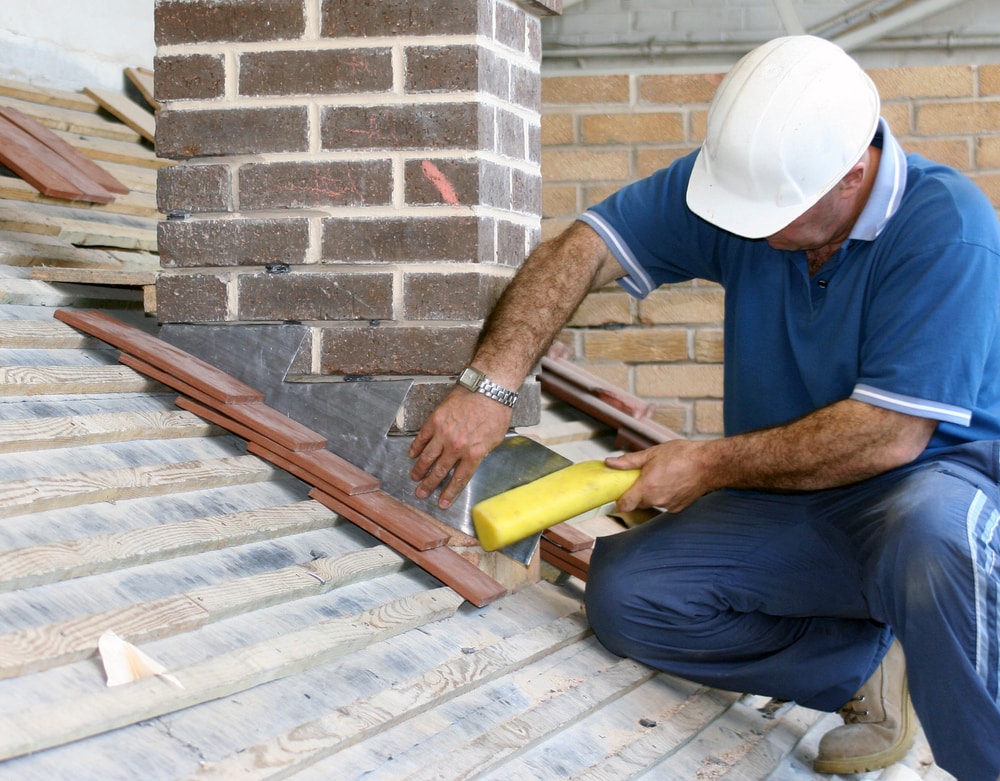There’s more to a roof than wood and shingles. If you want to understand how a roof stays waterproof, you’ll need to familiarize yourself with roof flashing. Learn the difference between roof flashing types so you know how to keep your roof dry and in good repair.
Roof Flashing Types
When you think about what goes into making a roof, you probably picture the usual things. A pile of sturdy shingles, a hammer and nails, wooden beams, maybe even a chimney. But have you ever heard of roof flashing? It’s not as widely discussed as other roofing materials, but your roof’s integrity depends on it.
What Is Roof Flashing?
Keeping water out of a roof is one of the most difficult parts of roof construction. If you do not construct a roof to repel water, it can pool and cause moisture damage. So what does a roofer do to keep a roof waterproof?
Enter roof flashing. Roof flashing refers to thin strips and sheets of galvanized metal that roofers use to guide water away from vulnerable parts of the roof. Flashing is also placed in-between structures and the roof itself in order to block moisture.
Roof Flashing Materials
There are three materials that roofers typically use to make roof flashing:
- Steel flashing is the most common flashing material used. It is affordable, sturdy, and corrosion-proof when galvanized.
- Aluminum flashing is also popular, though it is less durable than steel flashing. It is lightweight and easy to shape, making it ideal for more complicated roof flashing situations.
- Copper flashing is popular as an aesthetic choice. It also is easy to shape and soldier into place, and more durable than aluminum. The only downside to copper flashing is that it will discolor over time, though some homeowners appreciate the artistic touch this brings to their roof.
Roof Flashing Shapes and Functions
There are many different types of roof flashing, and they’re all used for specific roofing tasks:
- Continuous flashing is a long, single piece of metal that channels water directly downwards to shingles below. Another nickname for continuous flashing is “apron flashing.”
- Base flashing is appropriate for structures such as chimneys, where multiple pieces of flashing attach a structure to a roof and waterproof the gap between itself and the shingles. Base flashing secures the structure to the roof itself.
- Counter flashing is placed directly above the base flashing on the structure. Using two pieces of flashing allows the structure to be secured in a way where water is always pointed towards the shingles.
- Step flashing is a long, rectangular piece of flashing that is bent at an angle, like a stair step. It is typically installed in layers in-between shingles to direct water away from them.
- Valley flashing is placed in any dips where water can gather on your roof. They direct water away from gathering in those areas and damaging the roof.
- Drip edges are long, thin strips of flashing that are placed along the edges of the roof to direct water away from the walls.
- Kickout flashing is the flashing that connects the roof to the gutters. It directs water directly into the gutters.
_____
Knowing how to use which type of roof flashing and when to use it can be more complicated than you may think. It’s good to know how roof flashing works, but when it comes time to install or repair it, leave that job to an experienced roofer.
Do you need help with your roof flashing? Contact Taylor-Made Roofing. With over 20 years of experience in residential and commercial roofing, Taylor-Made Roofing is a company that you can trust with all of your roofing needs. Our family-owned business offers quality services, a reassuring warranty, and free estimates. For more information, please contact us online. We look forward to hearing from you!

